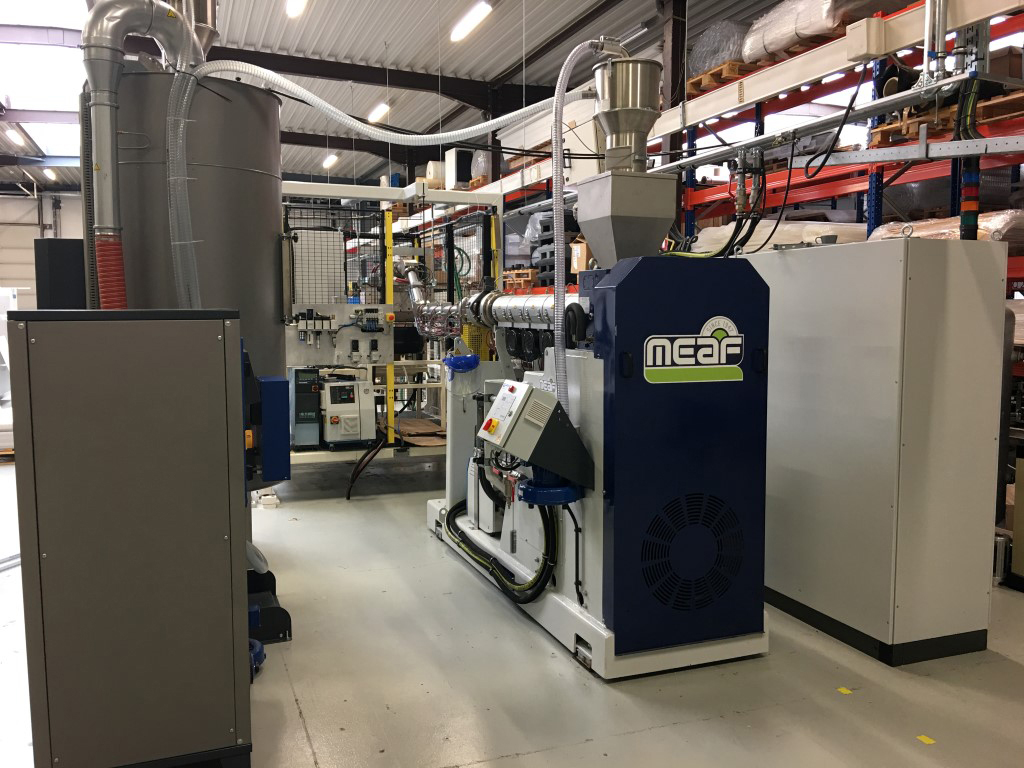
EconCore, which makes cores and sandwich material, says that it is making strong progress in development of new all-thermoplastics continuous honeycomb cores. This follows the installation of a laboratory-scale extrusion and forming line at the company’s R&D facilities in Leuven, Belgium.
The line includes a 50 mm extruder, built by machine specialist MEAF from Yerseke, the Netherlands, and equipped with a 500 mm sheet die built by flat-die specialist EMO Extrusion Molding from Micheldorf, Austria.
EconCore honeycomb structures are produced from a single continuous thermoplastic sheet using the company’s ThermHex technology. This involves a sequence of thermoforming, folding and bonding operations. Cell size, density and thickness of the honeycombs can be altered with hardware and/or process parameter adjustments. The process allows for inline bonding of solid skins to one or both sides of the honeycomb, to create a finished composite panel.
Before installing the new extruder, EconCore was carrying out its honeycomb developments using sheet unwound from a roll. ‘Now that we can produce our own sheet in-line, we have more flexibility in our operations and it is obviously much easier to make changes to the material formulations,’ said Wouter Winant, the company’s technical manager.
Process technology
The extruder can process polyolefins, bioplastics and thermoplastics such as polycarbonates, polyamides, and polyphenylene sulphide. ‘This is a non-typical set-up, but it is very important for our development work,’ added Winant. ‘EconCore already has licensees around the world producing continuous honeycombs and honeycomb-cored laminates in polyolefins – predominantly polypropylene – and we intend to continue refining the process technology for these materials. The new line is partly intended for this purpose.‘At the same time though, we are extending the potential of ThermHex technology by enabling it to be used with thermoplastics with superior mechanical and thermal performance.’
This story uses material fromEconCore, with editorial changes made by Materials Today. The views expressed in this article do not necessarily represent those of Elsevier.




